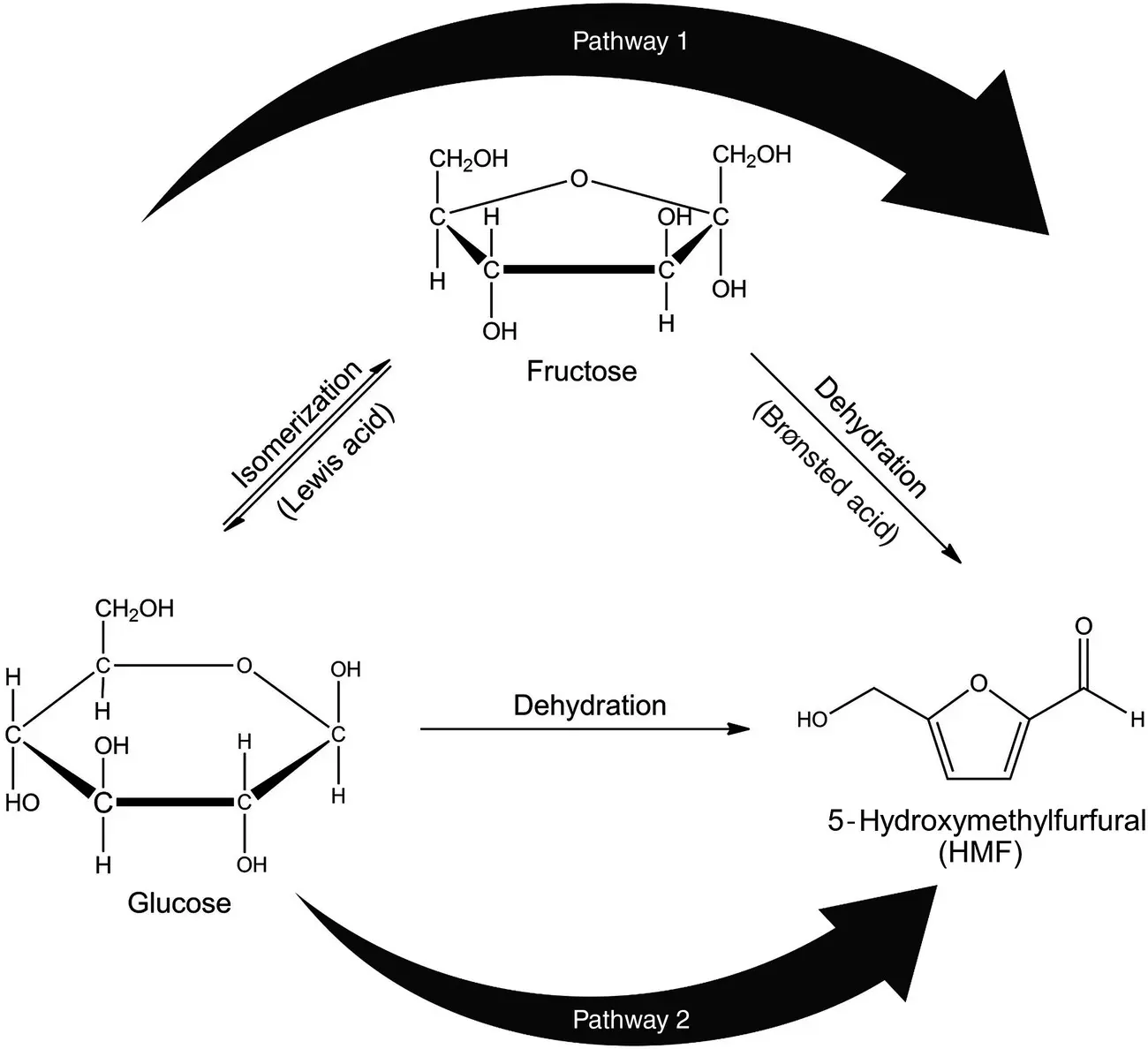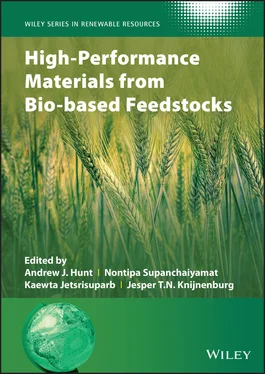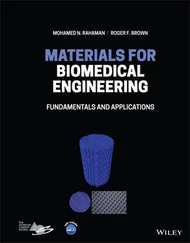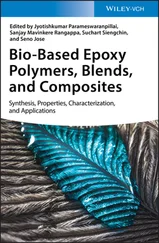High-Performance Materials from Bio-based Feedstocks
Здесь есть возможность читать онлайн «High-Performance Materials from Bio-based Feedstocks» — ознакомительный отрывок электронной книги совершенно бесплатно, а после прочтения отрывка купить полную версию. В некоторых случаях можно слушать аудио, скачать через торрент в формате fb2 и присутствует краткое содержание. Жанр: unrecognised, на английском языке. Описание произведения, (предисловие) а так же отзывы посетителей доступны на портале библиотеки ЛибКат.
- Название:High-Performance Materials from Bio-based Feedstocks
- Автор:
- Жанр:
- Год:неизвестен
- ISBN:нет данных
- Рейтинг книги:5 / 5. Голосов: 1
-
Избранное:Добавить в избранное
- Отзывы:
-
Ваша оценка:
- 100
- 1
- 2
- 3
- 4
- 5
High-Performance Materials from Bio-based Feedstocks: краткое содержание, описание и аннотация
Предлагаем к чтению аннотацию, описание, краткое содержание или предисловие (зависит от того, что написал сам автор книги «High-Performance Materials from Bio-based Feedstocks»). Если вы не нашли необходимую информацию о книге — напишите в комментариях, мы постараемся отыскать её.
High-Performance Materials from Bio-based Feedstocks
The latest advancements in the production, properties, and performance of bio-based feedstock materials
www.wiley.com/go/rrs High-Performance Materials from Bio-based Feedstocks
High-Performance Materials from Bio-based Feedstocks
High-Performance Materials from Bio-based Feedstocks — читать онлайн ознакомительный отрывок
Ниже представлен текст книги, разбитый по страницам. Система сохранения места последней прочитанной страницы, позволяет с удобством читать онлайн бесплатно книгу «High-Performance Materials from Bio-based Feedstocks», без необходимости каждый раз заново искать на чём Вы остановились. Поставьте закладку, и сможете в любой момент перейти на страницу, на которой закончили чтение.
Интервал:
Закладка:
A drawback of the sulfonated bio‐based activated carbon catalyst is that its preparation process is environmentally unfriendly owing to the heating of carbon materials in concentrated sulfuric acid for an extended time. Apart from sulfuric acid, tribasic potassium phosphate (K 3PO 4) was recently used to activate carbon materials. The K 3PO 4impregnated on the activated carbon catalyst benefited the biodiesel production from waste cooking oil. With 5% catalyst loading, the biodiesel yield was 98% in a 12 : 1 methanol‐to‐oil molar ratio at 60 °C for four hours. Only 20% reduction in biodiesel yield was observed when the catalyst was used for five reaction cycles [125].

Figure 2.7 Esterification of acetic acid.
One way to further enhance the catalytic activity of bio‐based activated carbon is via impregnation with various metal ions. The Fe 3O 4embedded on beetroot‐derived activated carbon catalyst (Fe 3O 4/BRAC) was examined for its performance in the reduction of nitroarenes as illustrated in Figure 2.8[126]. The process yielded a high aromatic amines product (99%) even at 85 °C for 15 minutes. The reaction pathway as described in Veerakumar et al. [126] can be briefly summarized as follows: first, the nitrobenzene and isopropanol were chemisorbed on the surface of Fe 3O 4/BRAC. Hydrogen in the form of hydride ion was transferred from the isopropanol to the substrate. Subsequently, the existence of KOH and the Fe 3O 4/BRAC catalyst promoted the transformation of alcohol into alkoxide species. The nitro groups on the catalyst surface were reduced to nitrosobenzene, which reacted with hydrogen ion from isopropanol to form aniline. The product desorbed from the catalyst surface in the final step. The immobilization of Fe 3O 4on the large surface area activated carbon facilitated the reaction under mild conditions in a short reaction time. The Fe 3O 4/BRAC catalyst boosted the hydrogen relocation from interacting isopropanol and KOH. Moreover, it presented high stability with less than 10% decrease in aniline yield after five repeated cycles. Importantly, separation of the Fe 3O 4impregnated carbon catalyst from the products was readily achieved by an external magnetic field owing to the magnetic properties of Fe 3O 4.
Lignocellulosic waste‐derived activated carbons impregnated with ZnCl 2(giving Lewis acid sites) or H 2SO 4(giving Brønsted acid sites) were very effective for the conversion of glucose to 5‐hydroxymethylfurfural (HMF) through isomerization and dehydration according to pathway 1 presented in Figure 2.9. These catalysts were more productive than homogeneous catalysts (H 2SO 4and ZnCl 2), even though these contained higher Lewis and Brønsted acid sites than the impregnated activated carbon [127]. This implies that the activated carbon itself had specific catalytic behavior for this reaction. Activated carbon possessed some Lewis and Brønsted acid sites but it had very high specific surface area and high amount of oxygenated functional groups. Therefore, the two latter predominant properties of the activated carbon strongly affected its catalytic efficiency. Its large specific surface area might increase the opportunity for adsorption of reactants on the active site. The large amount of oxygen functional groups on its surface might cooperate in the fructose dehydration to HMF.
It is well known that KOH activation before metal impregnation increases the surface area and pore volume of the carbon, particularly the micropore volume. The metallic K interposes itself between the carbon structure, leading to permanent enlargement of the carbon lattice after the removal of potassium metal. Thus, it is capable of increasing both the catalytic activity and the stability of the metal‐impregnated carbon catalysts in many reactions, e.g. Mizoroki–Heck, Suzuki, and Sonogashira coupling reactions, toluene steam reforming, and methanation [128–130]. Even if the KOH activator can intensively improve the surface area and porosity of carbon, it requires a relatively high activation temperature. Alternatively, H 3PO 4is an interesting activator that requires a lower activation temperature [131]. The H 3PO 4was used to activate olive stone at room temperature before carbonization, followed by wet impregnation with zirconium, and the resulting catalyst was employed in methanol dehydration to dimethyl ether [132]. This preparation method produced a superb mesoporous structure and large surface area (1190 m 2g −1) despite the activation occurring at room temperature. Additionally, the extensive formation of active zirconium phosphate functional groups over the surface area of carbon was observed. The catalyst presented both a high conversion in methanol dehydration and high selectivity to dimethyl ether. An increase in the H 3PO 4activation temperature along with the addition of NaBH 4promoted the microporous area and the total surface area of the activated carbon (2559 m 2g −1) [133]. Activated carbon was widely employed as a support for several metal catalysts such as nanoparticles of Co, Ni, Cu, and noble metals. These catalysts were effective in bio‐oil hydrodeoxygenation and hydrogen production via both biomass hydrolysate reforming and ammonia borane hydrolysis [131, 134, 135]

Figure 2.8 Reduction of nitrobenzene.

Figure 2.9 Conversion of glucose to 5‐hydroxymethylfurfural.
2.5.4 Hydrothermal Bio‐based Carbons
A green hydrothermal carbonaceous material was developed from by‐products of sugar dehydration in hot compressed water at 150–250 °C [136, 137]. Hydrothermal carbon has been used not only in catalysis but also in agriculture, energy storage, and adsorption. Hydrothermal reaction mechanisms comprise dehydration and decarboxylation, and the process parameters such as reaction temperature and type of biomass need to be considered since these factors affect the catalytic property of the carbon. Originally, carbohydrate derivatives were utilized as a model structure for the preparation of hydrothermal carbons. Various researchers have prepared hydrothermal carbons from mono‐, di‐, and polysaccharides [138–140]. The hydrothermal carbon produced from glucose had a uniform spherical morphology with micron‐sized particles and a smooth surface [141]. The hydrothermal temperature had a stronger influence than the reaction time, not merely on the yield but also on the elemental compositions (i.e. C, H, and O) of the hydrochar. An increase in temperature resulted in a decrease in oxygen and hydrogen contents, while the carbon content increased [142]. The hydrothermal carbon possessed a large amount of oxygen‐containing functional groups including hydroxyl and aromatic C=O groups (carboxyl, carbonyl, ester, and quinone). These functional groups catalyze several reactions involved in the transformation of biomass to chemicals and organic pollutant degradation but the activity was not outstanding [143, 144]. Its porosity and surface area were also relatively restricted, which were less than 10 cm 3g −1and 40 m 2g −1, respectively. Chemical modification with an oxidizing agent and metal immobilization are usually applied to enhance its catalytic activity and other properties. After modification with H 2SO 4, the hydrothermal carbon presented a rougher surface that was more accessible to the reactant, as well as a large amount of Brønsted acids and some Lewis acids [140]. The sulfonation created polycyclic aromatic carbon rings in an irregular form [145]. The improved properties of the hydrothermal carbon benefited the yield of ethyl levulinate and ethyl glucoside from the cellulose ethanolysis, and no tar or char was formed throughout the reaction.
Читать дальшеИнтервал:
Закладка:
Похожие книги на «High-Performance Materials from Bio-based Feedstocks»
Представляем Вашему вниманию похожие книги на «High-Performance Materials from Bio-based Feedstocks» списком для выбора. Мы отобрали схожую по названию и смыслу литературу в надежде предоставить читателям больше вариантов отыскать новые, интересные, ещё непрочитанные произведения.
Обсуждение, отзывы о книге «High-Performance Materials from Bio-based Feedstocks» и просто собственные мнения читателей. Оставьте ваши комментарии, напишите, что Вы думаете о произведении, его смысле или главных героях. Укажите что конкретно понравилось, а что нет, и почему Вы так считаете.












